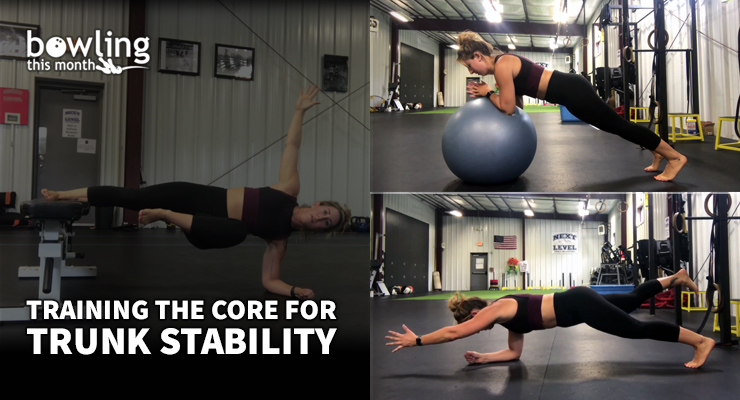Article Contents
- 1. The importance of core strength in bowling
- 2. What exactly is the core?
- 3. Training the core
- 3.1. Breathing
- 3.2. Banded cable chops and lifts
- 3.3. Copenhagen plank
- 3.4. Loaded carry variations
- 3.5. Rotational medicine ball slams
- 3.6. Stability ball planks and roll-outs
- 3.7. Three-point and two-point planks
- 4. Conclusion
Note: This article is only available to Bowling This Month subscribers.
When considering the physical training needs of bowlers, the most commonly discussed areas are building core strength and leg strength. While I discussed numerous ways of strengthening the lower body in my last two articles (here and here), I’d like to now go in-depth on the best ways for bowlers to train their cores for improved performance.
I feel it is important to debunk some myths about some of the common core exercises that are not always the best for the lower back. All too often, I hear bowlers working on getting healthy and hitting the gym, but ending up with lower back pain. This is actually apparent with not only bowlers, but with people in general when they start a new workout routine. The truth is that many of the traditional “core” or “abdominal” exercises can do more harm than good for your spinal health.
The importance of core strength in bowling
What does core strength have to do with bowling? In sports, we often think of core strength as being important for creating force and rotational power. But, core strength is actually important to everyone—not just athletes—because the core muscles are those that are supporting the spine and keeping it healthy.
If we fail to build up proper core strength, then there will be compensation somewhere else when we are throwing a bowling ball. That compensation will lead to dysfunctions of the hips and spine, which can eventually cause back pain. The stronger you build up the core muscles, the more stable and balanced you ...
Already a premium member? Click here to log in.


 (Only
(Only 